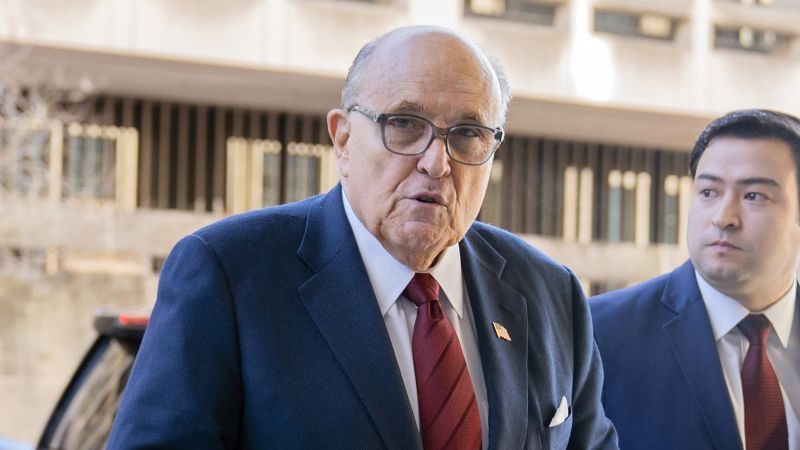Comment on this story
comment
Senator Raphael Warnock of Georgia works in the Russell Senate Office Building, the Capitol’s oldest and most impressive building, which houses senators and staff. The Russell’s soaring Beaux-Arts corridors, built on a granite base with marble and limestone cladding, evoke the feel of a Parisian boulevard – wide, grand, powerful.
Completed in 1908, the building was named 50 years ago last month after another Georgian, Democratic Senator Richard Russell. Whether 1972 was ages ago (the median age in Georgia is 37) or a current moment that is still shaping American politics (more than 1 million current Georgians were adults when the building got its name) is a complicated question . That Warnock, a black man, serves in Georgia’s US Senate suggests an answer of sorts. That he works in a federal building named in honor of a white supremacist suggests otherwise. His Republican opponent being black and goofy at the same time seems to go both ways, right?
Russell was not a racist cartoon character brought to life. As his biographer Gilbert C. Fite wrote: “Unlike some of his colleagues, notably Theodore Bilbo of Mississippi, Russell did not deliver racist diatribes. His tone was moderate and he never said anything bad about black people.”
But Russell’s malice was no less sharp. He had the same goals as Bilbo and other Misthorn Leghorns. Known for industriousness, intellect, and persuasiveness, Russell employed those qualities in a decades-long defense of American apartheid.
Russell managed to stay committed to white supremacy while somehow denying—to the public and maybe even to himself—that he was a racist. Amid a fight to block anti-lynching legislation, he said, “Tonight there are no Negroes in my state who would say that any official or personal action of mine has resulted in an injustice to Negroes.”
Was it unfair to keep black people out of substandard schools and out of clerical or administrative posts in the federal government? Apparently Russell didn’t think so. Was it unfair that black people had only as much access to justice as some racist local white group wanted them to have at any given moment? The anti-lynching law, Russell said, would result in “vital blows to the civilization of those I seek to represent.”
Russell, an expert in both national defense and the routing of military contracts to his home state, was not a complete reactionary. He came to Washington in 1932, just before Franklin Roosevelt took office, and was a strong supporter of most of the New Deal, including the Emergency Banking Act, the Tennessee Valley Authority, the National Industrial Recovery Act, and the Civilian Conservation Corps. He admired and supported Roosevelt while accusing Roosevelt’s wife, Eleanor, of encouraging blacks to rise above their place.
As the civil rights era unfolded, Russell outlined the South’s “massive resistance” strategy in the Senate. He fought against Harry Truman’s integration of the US Army, campaigned to keep poll taxes to disenfranchise black voters, decried the desegregation of schools, and waged war on every piece of civil rights law, including the landmark bill that eventually broke the Southern blockade in 1964 .
Some of his tactics have legs. In 1949, he introduced a bill to redistribute Southern blacks in the United States, with the goal of exposing white civil rights activists as hypocrites who didn’t want blacks in their own states. You can see a similar malice in the efforts of Republican governors from Florida and Texas to send undocumented migrants to Democratic-run states. Likewise, Russell’s whining about the oppression his white constituents suffer is now a staple of MAGA rhetoric. White Southerners, Russell said, are “the most despised and abused minority in the country.” The biased media of the North, he complained, was poisoning the minds of Americans against the noble South.
None of this racist grotesqueness prevented Russell from being so admired by his peers that they named the Senate’s grandest building after him, even eight years after he protested the Civil Rights Act. Would such an honor be bestowed on every black American who has spent his entire life attacking white people? The question is absurd.
After the death of Republican Senator John McCain in 2018, Democratic Senate Chairman Charles Schumer proposed renaming the Russell Building after McCain. A former Russell employee responded that it would be “unfair” and “irrational” for Russell’s racial record to overshadow his achievements.
The commentary captures something about America’s stuttering path to multiracial democracy. The promotion of white supremacy is now widely (though not universally) recognized as an unfortunate use of political power. But it is not yet considered a disqualification for a national honor.
For now, a black Georgia senator continues to work in a building named after a white Georgia supremacist. America will get a different reading of the health of its democracy if one or the other is removed from the building.
More from the Bloomberg Opinion:
• The Republicans can still let Herschel Walker down: Ramesh Ponnuru
• The one thing that can save Herschel Walker: Joshua Green
• The most surprising thing about the midterms: Jonathan Bernstein
This column does not necessarily represent the opinion of the editors or of Bloomberg LP and its owners.
Francis Wilkinson is a Bloomberg Opinion columnist covering US politics and politics. He was previously an editor for The Week, a writer for Rolling Stone, a communications consultant and political media strategist.
For more stories like this, visit bloomberg.com/opinion









:no_upscale()/cdn.vox-cdn.com/uploads/chorus_asset/file/22408756/UNITE_HERE_1.jpeg)